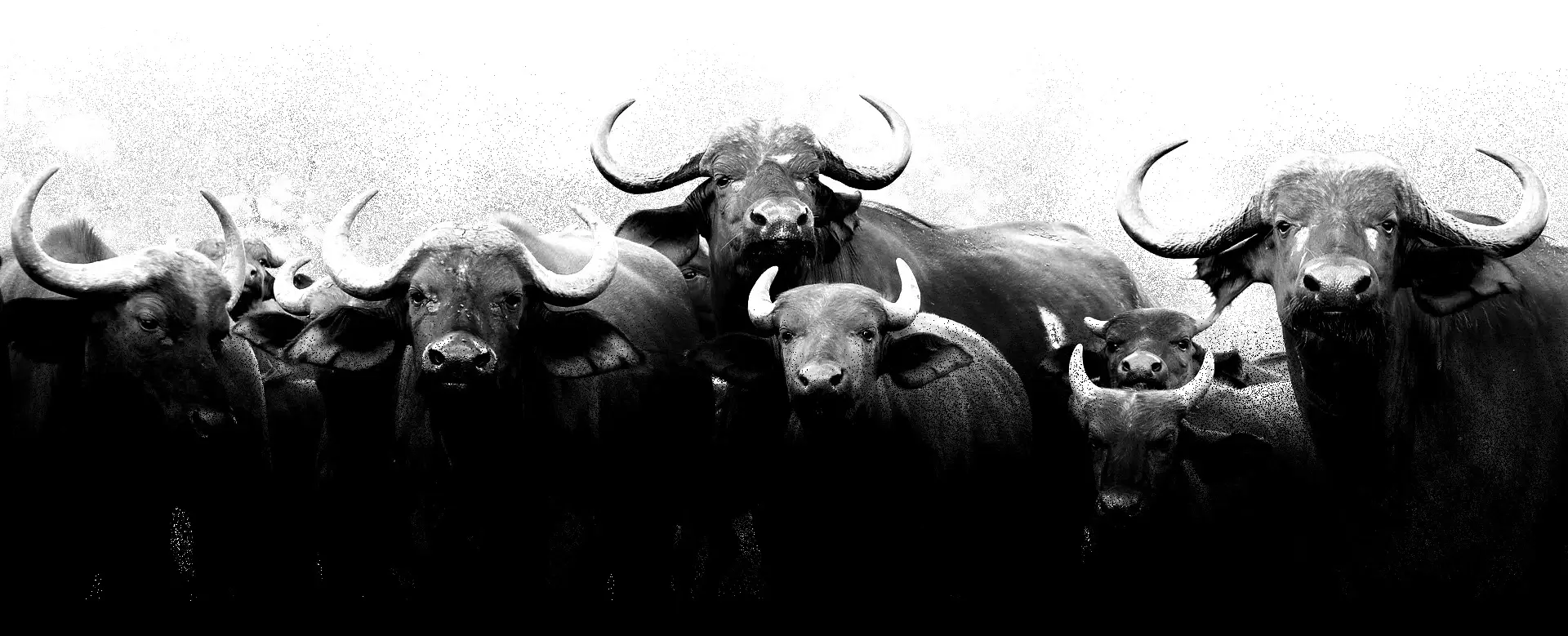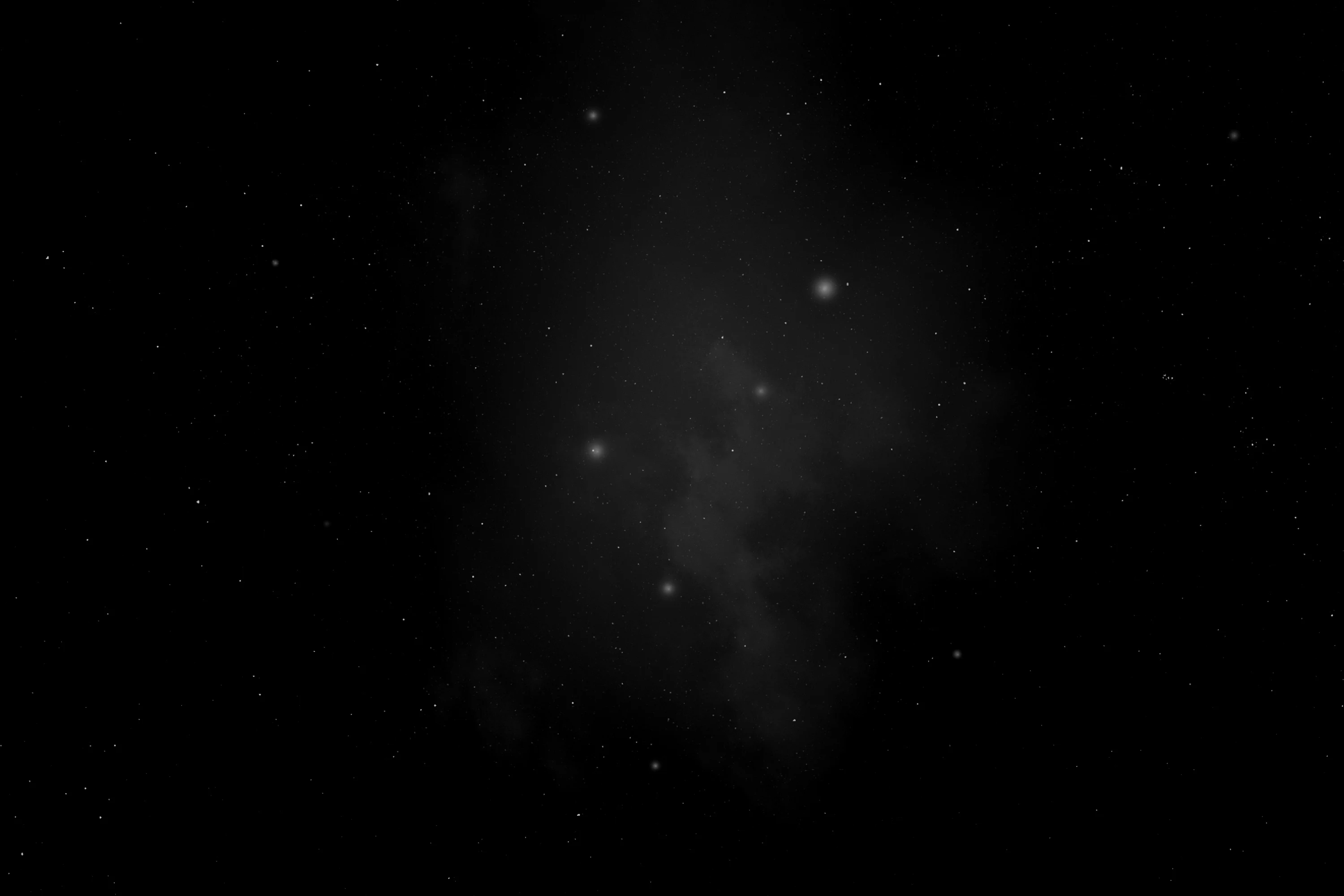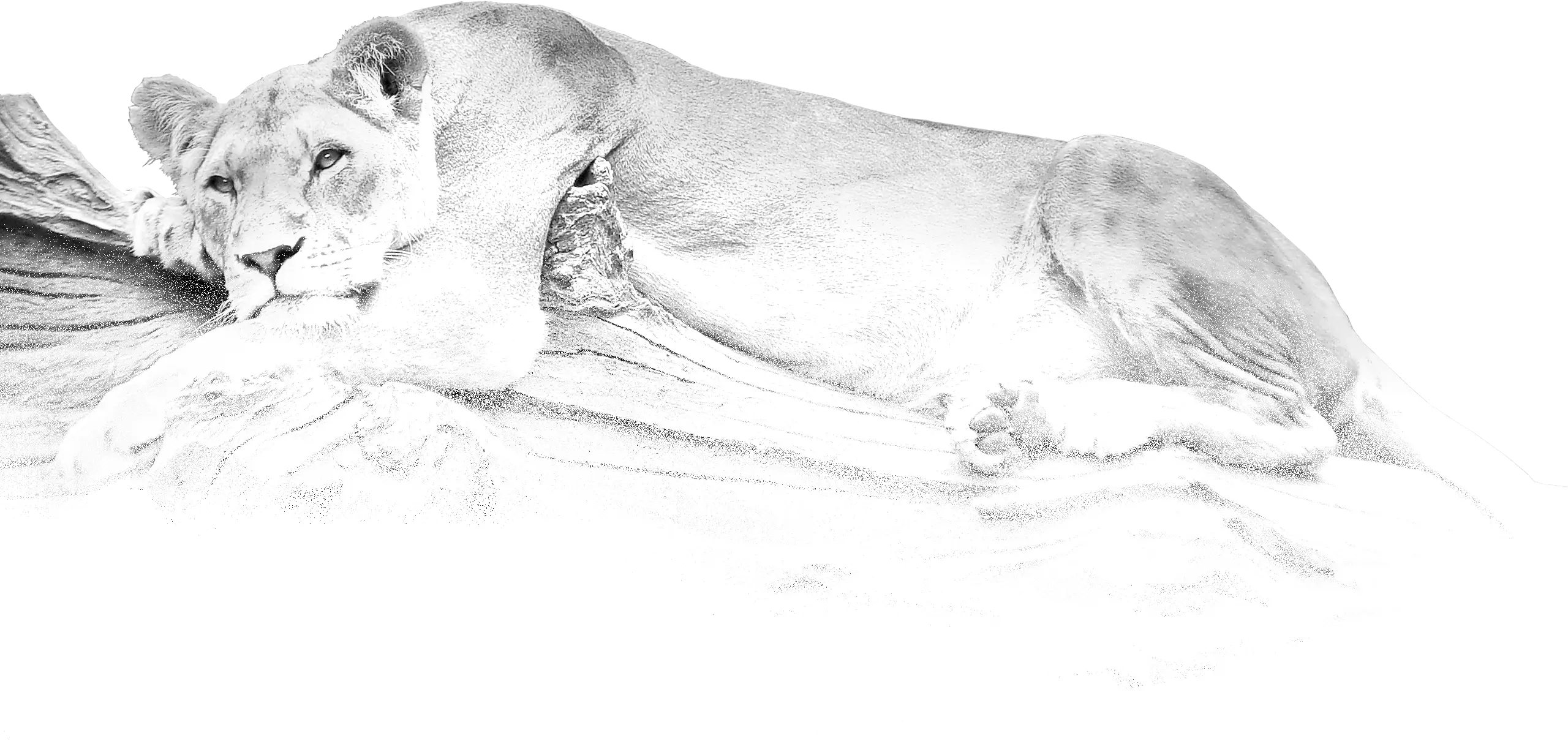
(Otariidae)
Eared Seals
Вухачеві
An eared seal, otariid, or otary is any member of the marine mammal family Otariidae, one of three groupings of pinnipeds. They comprise 15 extant species in seven genera and are commonly known either as sea lions or fur seals, distinct from true seals (phocids) and the walrus (odobenids). Otariids are adapted to a semiaquatic lifestyle, feeding and migrating in the water, but breeding and resting on land or ice. They reside in subpolar, temperate, and equatorial waters throughout the Pacific and Southern Oceans, the southern Indian, and Atlantic Oceans. They are conspicuously absent in the north Atlantic.
Anatomy and appearance
Otariids have proportionately much larger foreflippers and pectoral muscles than phocids, and have the ability to turn their hind limbs forward and walk on all fours, making them far more maneuverable on land. They are generally considered to be less adapted to an aquatic lifestyle, since they breed primarily on land and haul out more frequently than true seals. However, they can attain higher bursts of speed and have greater maneuverability in the water. Their swimming power derives from the use of flippers more so than the sinuous whole-body movements typical of phocids and walruses.
Otariids are further distinguished by a more dog-like head, sharp, well-developed canines, and the aforementioned visible external pinnae. Their postcanine teeth are generally simple and conical in shape. Sea lions are covered with coarse guard hairs, while fur seals have a thick underfur, which has historically made them the objects of commercial exploitation.
Male otariids range in size from the 70 kg Galápagos fur seal, smallest of all otariids, to the over 1,000 kg Steller sea lion. Mature male otariids weigh two to six times as much as females, with proportionately larger heads, necks, and chests, making them the most sexually dimorphic of all mammals.
Behavior
All otariids breed on land during well-defined breeding seasons. Except for the Australian sea lion, which has an atypical 17.5 month breeding cycle, they form strictly annual aggregations on beaches or rocky substrates, often on islands. All species are polygynous; i.e. successful males breed with several females. In most species, males arrive at breeding sites first and establish and maintain territories through vocal and visual displays and occasional fighting. Females typically arrive on shore a day or so before giving birth. While considered social animals, no permanent hierarchies or statuses are established on the colonies. The extent to which males control females or territories varies between species. Thus, the northern fur seal and the South American sea lion tend to herd specific harem-associated females, occasionally injuring them, while the Steller sea lion and the New Zealand sea lion control spatial territories, but do not generally interfere with the movement of the females. Female New Zealand sea lions are the only otariids that move up to 2 km into forests to protect their pups during the breeding season.
Otariids are carnivorous, feeding on fish, squid and krill. Sea lions tend to feed closer to shore in upwelling zones, feeding on larger fish, while the smaller fur seals tend to take longer, offshore foraging trips and can subsist on large numbers of smaller prey items. They are visual feeders. Some females are capable of dives of up to 400 m.
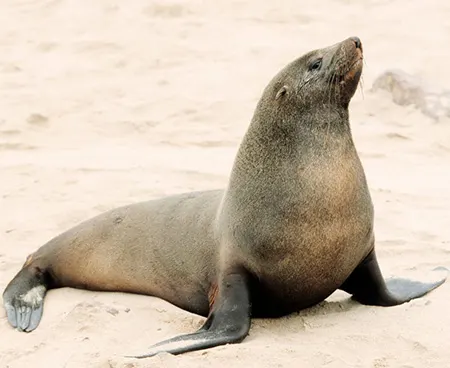
(Arctocephalus pusillus)
Brown Fur Seal
Бурий морський котик
It inhabits the southern and southwestern coast of Africa, from Cape Cross in Namibia to Black Rocks in the Eastern Cape province. It is also found in the Bass Strait, on four islands off Victoria (southeastern Australia) and five islands off Tasmania.
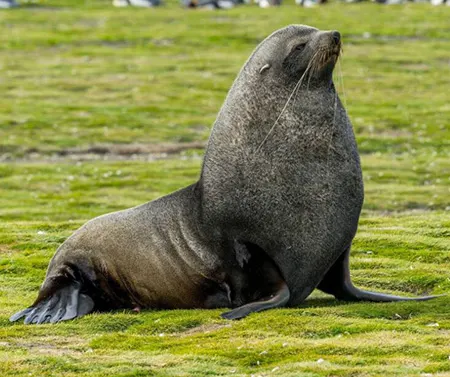
(Arctocephalus gazella)
Antarctic Fur Seal
Кергеленський морський котик
It is mostly found in waters south of the Antarctic Convergence, but some do inhabit areas slightly north of it. Most breeding populations occur on South Georgia Island and Bird Island, while other populations are found in the south Prince Edward, Crozet, Kerguelen, and Macquarie Islands.
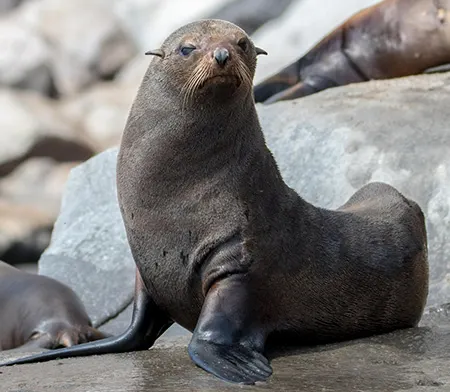
(Arctocephalus townsendi)
Guadalupe Fur Seal
Гваделупський морський котик
The northernmost border of its range is the Channel Islands, California, while the southernmost border is Cedros Island, Baja California, Mexico. Its only current breeding area is Guadalupe Island, located 290 km west of Baja California.
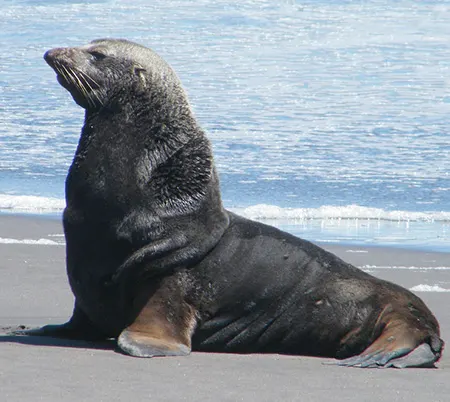
(Arctocephalus philippii)
Juan Fernández Fur Seal
Фернандеський морський котик
It is found only on the Pacific Coast of South America, more specifically on the Juan Fernández and the Desventuradas Islands.

(Arctocephalus galapagoensis)
Galápagos Fur Seal
Галапагоський морський котик
It is endemic to the Galapagos Islands in Ecuador, South America. It is present on nearly all the islands of the Galapagos. They are typically found close to the coastline where there are rock ledges and crevices.
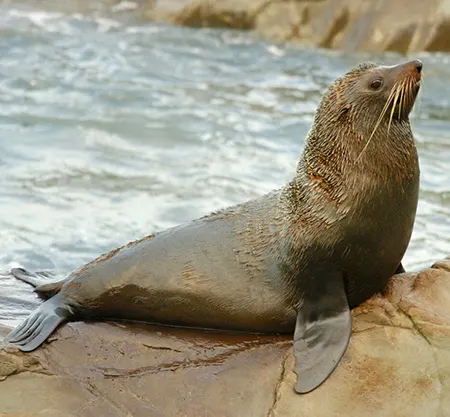
(Arctocephalus forsteri)
New Zealand Fur Seal
Новозеландський морський котик
It is found mainly on the South Island of New Zealand, southern Tasmania and southern Australia. It is also present on the Campbell Islands, as well as the Bounty, Chatham, and Auckland archipelagos.
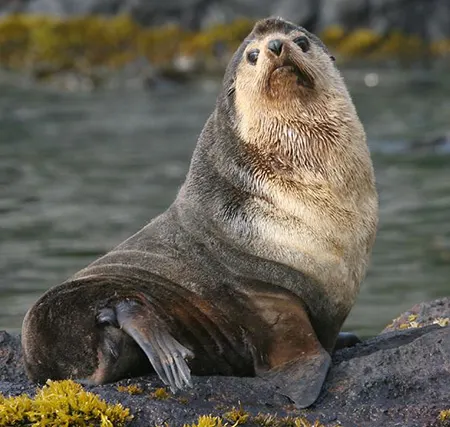
(Arctocephalus tropicalis)
Subantarctic Fur Seal
Субантарктичний морський котик
It is widespread in subantarctic waters, primarily north of the Antarctic Convergence, ranging from the south-eastern Atlantic and Indian Oceans to the south-western Pacific.
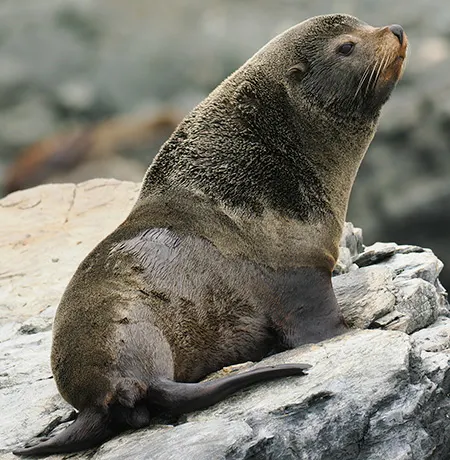
(Arctocephalus australis)
South American Fur Seal
Південноамериканський морський котик
It is found on neotropical ocean coasts from the Paracas Peninsula of southern Peru south to Cape Horn on the Pacific coast, and northward to southern Brazil on the Atlantic coast. They are also found on the Falkland Islands, Staten Island, and Escondida Island.
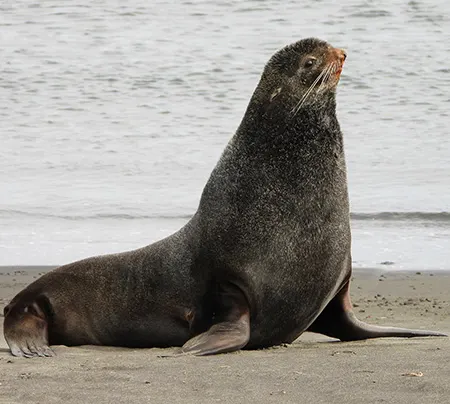
(Callorhinus ursinus)
Northern Fur Seal
Північний морський котик
It is found in the North Pacific, with its southernmost range extending roughly from the southern tip of Japan to the southern tip of the Baja California Peninsula. It also inhabits the Sea of Okhotsk and the Bering Sea.
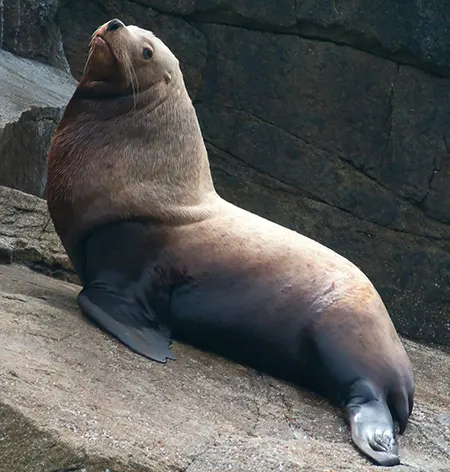
(Eumetopias jubatus)
Steller Sea Lion
Сивуч
It is found in coastal marine habitats of the North Pacific Ocean, including the Bering Sea, Sea of Okhotsk, and Sea of Japan, extending south to northern Japan in the west and to central California in the east.
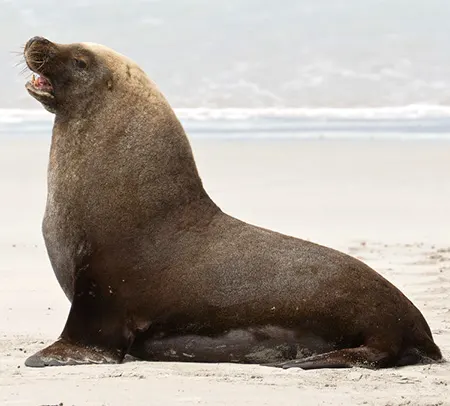
(Neophoca cinerea)
Australian Sea Lion
Австралійський морський лев
It is sparsely distributed across its range, from the Houtman Abrolhos Islands in Western Australia along the southern Australian coast to The Pages Islands in South Australia.
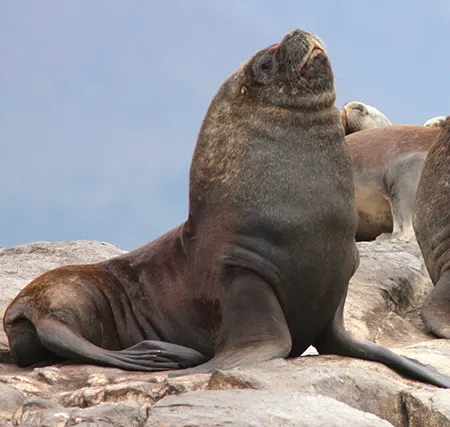
(Otaria flavescens)
South American Sea Lion
Південний морський лев
It is found along the coasts and offshore islands of South America, from Peru south to Cape Horn and then north to southern Brazil.
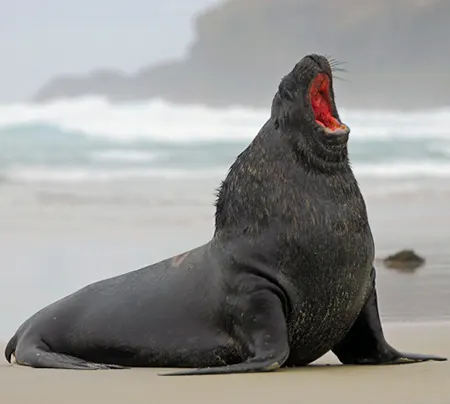
(Phocarctos hookeri)
New Zealand Sea Lion
Новозеландський морський лев
It is endemic to New Zealand and primarily breeds on New Zealand’s subantarctic Auckland, Campbell and Stewart islands.
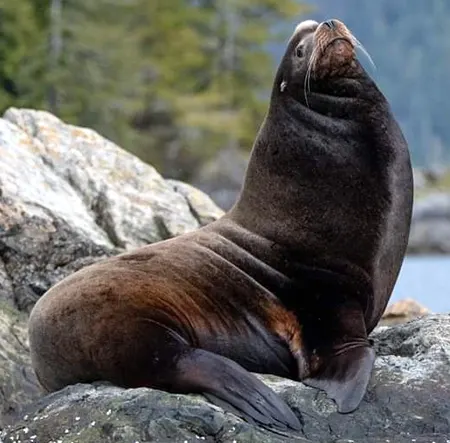
(Zalophus californianus)
California Sea Lion
Каліфорнійський морський лев
It ranges along the western coast and islands of North America, from south-eastern Alaska to central Mexico, including the Gulf of California.
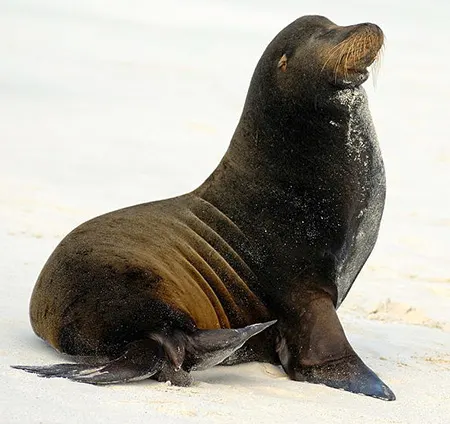
(Zalophus wollebaeki)
Galápagos Sea Lion
Галапагоський морський лев
It is found on all of the main islands of the Galápagos archipelago, and on a number of smaller islands in the area.
